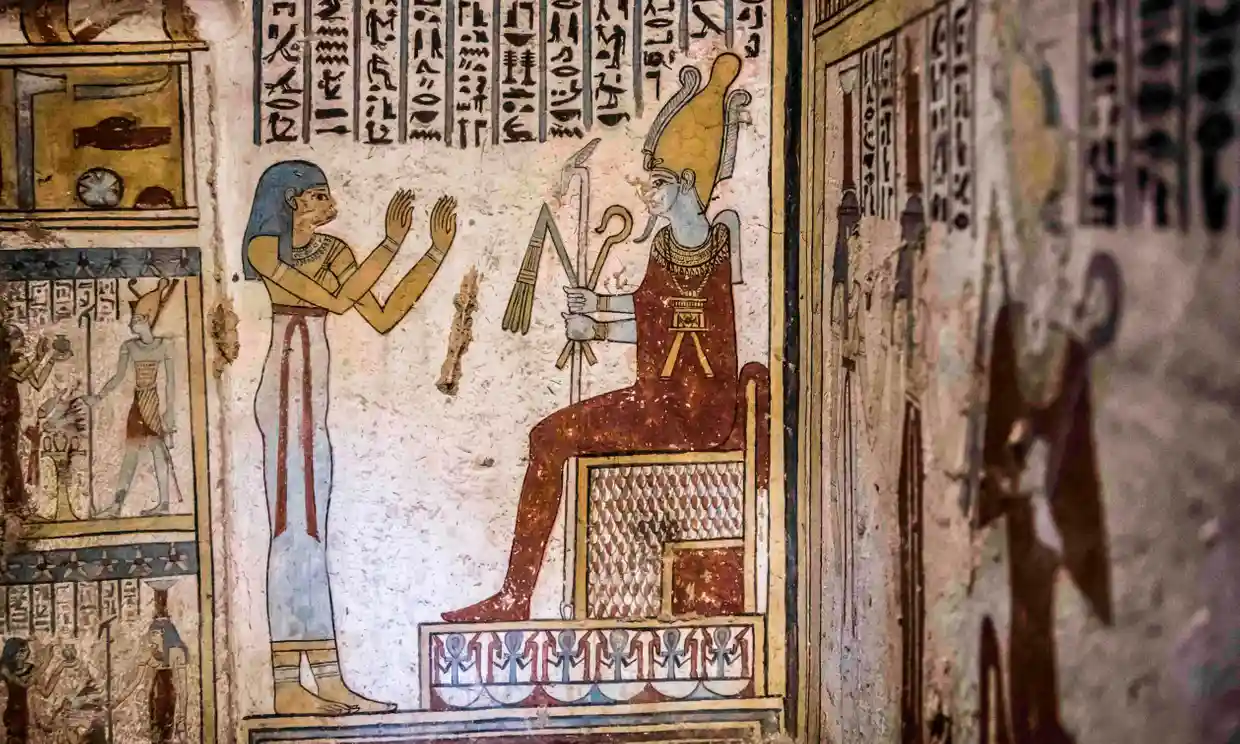A well-preserved and finely painted tomb was discovered in Sohag, Egypt, holding mummified humans, as well as 50 mummified animals, within its walls.
Photographs: Mohamed Abd El Ghany/Reuters
A collection of mice, cats and falcons have been publicly revealed near the Egyptian town of Sohag. It is believed the tomb was built for a senior official named Tutu and his wife during the early Ptolemaic period. The tomb was initially brought to light, along with seven other tombs, in October 2018 after criminal investigations lead by authorities, revealed smugglers illegally digging for and selling artefacts from the sites.
The mummies of a woman, aged between 35 and 50, and a boy, aged between 12 and 14 discovered inside the tomb and later put on display outside the burial chamber
Photographs: Mohamed Abd El Ghany/Reuters
The shallow burial chamber is located in a desert area near the Nile, roughly 390 kilometres south of Cairo. Its painted walls depict funeral processions, images of the owner working in the fields and a family genealogy written in hieroglyphics. The Secretary-general of Egypt’s Supreme Council of Antiquities, Mostafa Waziri, described the burial chamber as a “beautiful, colourful tomb” and “one of the most exciting discoveries ever in the area. The tomb is made up of a central lobby, and a burial room with two stone coffins. The lobby is divided in two, displaying images of Tutu giving and receiving gifts before different gods and goddesses. Mostafa Waziri said, “We see the same thing for his wife, Ta-Shirit-Iziz, with the difference that [we see] verses from a book, the book of the afterlife,” he added. Wall paintings inside the tomb, dating back more than 2,000 years, are well preserved. The woman, whose name is unknown, was presumably a musician as she is portrayed playing a rattle-like instrument called a sistrum.
The Ministry of Antiquities has declared the collection of 50 mummified mice, cats and falcons, recovered from the tomb as an unprecedented discovery. The government has described Sohag, where a museum opened last year, as “one of the most historically rich cities for antiquities in Egypt”. Excavation at the ancient site is continuing. “I really believe that this site needs excavation maybe for the coming 50 years,” Hawass told Reuters a day before the sarcophagi were opened. He expects more tombs to be found there. In 1927, a huge limestone sarcophagus was found in the area and placed in the Egyptian Museum in Cairo, but the site was then forgotten, Hawass said. But two years ago an unauthorised digger was found at the site and stopped. That’s what alerted archaeologists and why the excavation began.
Hieroglyphics and illustrations discovered inside the ancient Egyptian tomb
Pieces of decorative faces found inside the tomb
Photographs: Mohamed Abd El Ghany/Reuters










